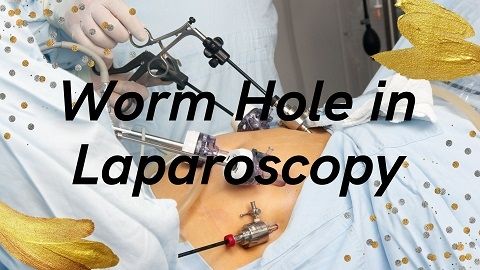One potential use of wormholes in medicine could be in the development of new imaging techniques. If wormholes existed and could be harnessed, they could provide a direct connection between two distant points in space and time. This could potentially allow doctors to look back in time and observe a patient's biological history, or even to remotely diagnose and treat patients in other parts of the universe.
Another possible application of wormholes in medicine could be in the field of telemedicine. Telemedicine uses electronic communication and information technologies to provide healthcare services remotely. If wormholes exist, they could provide an even more direct and instantaneous form of telemedicine, allowing doctors to remotely diagnose and treat patients in other parts of the universe.
Overall, the use of wormholes in medicine is purely hypothetical at this point and would require a significant breakthrough in our understanding of physics and the nature of the universe. Nonetheless, the concept of wormholes and their potential applications in medicine is an interesting area of theoretical research.
Quantum physics, also known as quantum mechanics, is a branch of physics that describes the behavior of matter and energy at the microscopic level, such as atoms and subatomic particles. It is a fundamental theory that explains the behavior of particles and how they interact with each other.
In contrast to classical physics, which describes the behavior of macroscopic objects such as cars or planets, quantum mechanics is based on the idea that particles can exist in multiple states simultaneously and can exhibit wave-particle duality, which means they can behave like both waves and particles.
The principles of quantum physics have led to the development of many technological applications, including lasers, transistors, and quantum computing. Quantum mechanics also play a vital role in understanding the behavior of matter in extreme conditions, such as in black holes and the early universe.
Overall, quantum physics is a fundamental theory that underpins many areas of modern physics and has practical applications in technology and engineering.
Quantum physics has many potential applications in medicine, including:
-
Medical Imaging: Quantum mechanics has led to the development of various imaging techniques, such as magnetic resonance imaging (MRI) and positron emission tomography (PET). These imaging techniques use quantum principles to produce detailed images of the human body, allowing doctors to diagnose and treat medical conditions more effectively.
-
Drug Development: Quantum mechanics has contributed to the development of new drugs and therapies, especially in the field of nanomedicine. Quantum dots, for example, are tiny particles that can be engineered to target specific cells or tissues in the body, making them useful in the delivery of drugs.
-
Diagnosis and Treatment of Cancer: Quantum mechanics has also been used to develop new techniques for the diagnosis and treatment of cancer. One example is quantum dot-based imaging, which can help detect cancer cells at an early stage. Quantum tunneling, on the other hand, has been used to destroy cancer cells without harming healthy cells.
-
Quantum Computing: Quantum computers have the potential to revolutionize medicine by performing complex simulations and analyses of biological systems. For example, quantum computers could be used to analyze large datasets and develop personalized treatments for patients.
Overall, the use of quantum physics in medicine is a rapidly growing field with enormous potential for improving patient outcomes and advancing our understanding of the human body.
Quantum physics has the potential to revolutionize the field of laparoscopic surgery in several ways, including:
Quantum Sensors: Quantum sensors can be used to improve the accuracy of laparoscopic surgery. These sensors can detect subtle changes in magnetic fields, temperature, and other environmental factors, which can help surgeons navigate through the body and avoid damaging sensitive tissues.
Quantum Dots: Quantum dots are tiny particles that can be engineered to emit light at specific wavelengths. These dots can be injected into the body, where they can be used to identify and target specific tissues or organs during laparoscopic surgery.
Quantum Computing: Quantum computing can be used to develop more advanced simulations of surgical procedures, allowing surgeons to practice complex surgeries in a virtual environment before performing them on a patient. This can improve surgical outcomes and reduce the risk of complications.
Quantum Cryptography: Quantum cryptography can be used to ensure the security of medical data during laparoscopic surgeries. This technology uses the principles of quantum physics to transmit information securely, making it difficult for hackers to intercept or manipulate sensitive medical information.
Overall, the use of quantum physics in laparoscopic surgery is still in its early stages, but it has the potential to improve the accuracy and safety of surgical procedures, as well as enhance the security of medical data.







